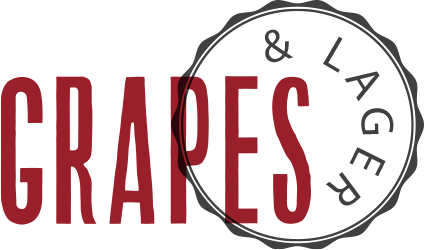The Rise and Rise of the Alternatives
Now that we are into the new year, its time to sit back and work out how to make 2014 a little bit more exciting than previous years. So if you are drinking the same old, same old, perhaps its time to spread your wings and try something new and different.
And now is an ideal time as there's a growing buzz in the wine industry about wines made from so called alternative varieties. Australia alone makes wine from more than 150 different grape varieties.
You could say that history has predicted this trend, given that back in the late 1980s,Cabernet Sauvignon and Chardonnay were all the rage. Shiraz was totally underrated and undervalued, with it generally being labelled 'Hermitage’. And Sauvignon Blanc was that slightly weird stuff Cloudy Bay made over in New Zealand.
However, Australian wine drinkers are generally a progressive mob and moving forward to the last few years, we have seen the likes of Shiraz and Sauvignon Blanc become established varieties with a number of new exciting varieties snapping at their heals. Varieties such as Pinot Grigio have started to appear on the wine drinking radar of many Australians, so much so that it is no longer considered alternative.
The definition of an alternative variety given by the Australian Alternative Varieties Wine Show (AAVWS) is any variety other than Cabernet Sauvignon, Chardonnay, Chenin Blanc, Colombard, Grenache, Merlot, Pinot Noir, Sauvignon Blanc, Semillon, Shiraz, Riesling and Verdelho…and now Pinot Grigio as of 2010. The AAVWS (see www.aavws.com) provides an excellent barometer as to how the Australian wine industry is progressing with making wine from “new” or alternative grape varieties.

The AAVWS is unique because there is no other wine show in the world that excludes the major varieties and focus solely on the new varieties whilst allowing entries from right around the country.
For some time now, Australia has been leading the world in experimenting with even “newer” wine grape varieties, some of which have been either struggling against extinction or anonymity in their country of origin. The results have been encouraging, creating a number of reasonable to great wines.Some alternative whites that are currently being planted in Australia are Gruner Veltliner, Fiano, Arneis, Albariño, Vermentino, Prosecco, Savagnin and Gargenega. On the red side of the ledger, we have Tempranillo, Dolcetto, Malbec, Sagrantino and Gamay to name a few. For a complete list of all the major alternative varieties being grown in Australia, see Vinodiversity.com's table at http://www.vinodiversity.com/Alternative-varieties.html.
Respected winemaker and Curtin University lecturer Mark Warren is at the forefront of this new exciting alternative movement to introduce the consumer to a new style of wine drinking. He has set up the boutique Margaret River label, Marq Wines with a focus on exploring the potential of alternative varieties and unusual winemaking. His alternative varieties in Gamay, Vermentino, Fianco, Tempranillo and Malbec are all rated highly by James Halliday.

A great example of one of these alternatives is Fiano, which is a white Italian wine that is grown primarily in the Campania region of southern Italy and on the island of Sicily. The grape has a long history in the Campanian region and is believed to have been the grape behind the ancient Roman wine “Apianum”. Even today, the name “Apianum” is permitted to appear on wine labels of the DOCG wine Fiano di Avellino.
Outside of Italy, several Australian wine producers have begun to use the grape. Production seems to be increasing, although the number of vineyards growing it is still small.

James Halliday’s Wine Companion has given Marc Wines 2012 Fiano a rating of 92 and writes that “It has a particularly interesting texture and mouth feel with an edgy/rocky/crystalline feel to it; orange and lemon blossom aromas and flavours make for even more interest, and provide length.”
Another interesting variety is Albariño or Alvarinho (Portuguese) is a variety of white wine grape grown in Galicia (northwest Spain) and northern Portugal, where it is used to make varietal white wines.
Albariño is actually the Galician name for the grape and was presumably brought to Iberia by Cluny monks in the twelfth century. Its name "Alba-Riño" means "the white from Rhine" and it has locally been thought to be a Riesling clone originating from the Alsace region of France, although it is interesting to note that the earliest known records of Riesling as a grape variety date from the 15th, which is way after the 12th century.
Whatever the origin, there is no dispute in terms of the quality and unique flavor profile of Albariño wines. It has been compared to Riesling for its minerality and bracing acidity; to Viognier, because of its fleshiness and peach/apricot character; and to Pinot Gris for its floral bouquet.
So for those of you who want to try something different, try tracking down some of these alternative varieties - I reckon you might be pleasantly surprised.

